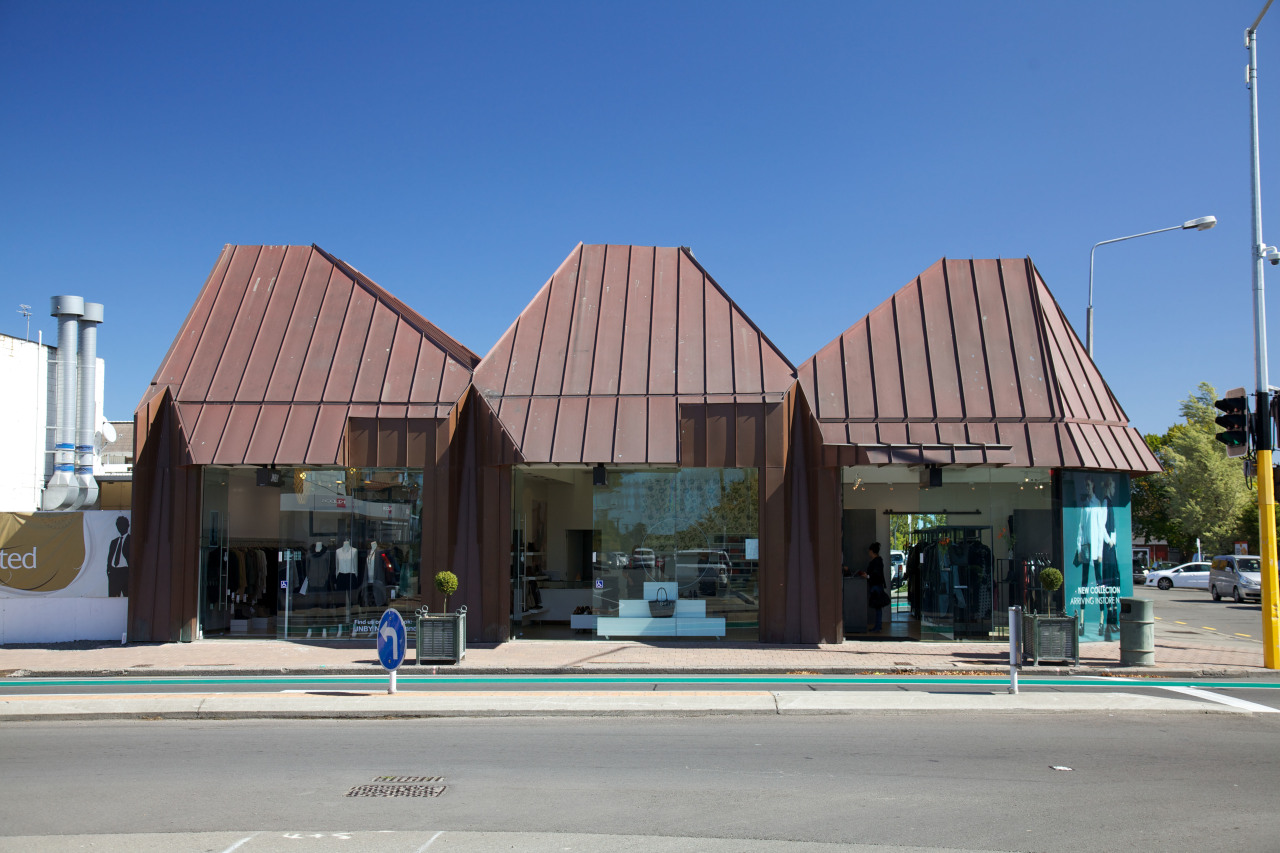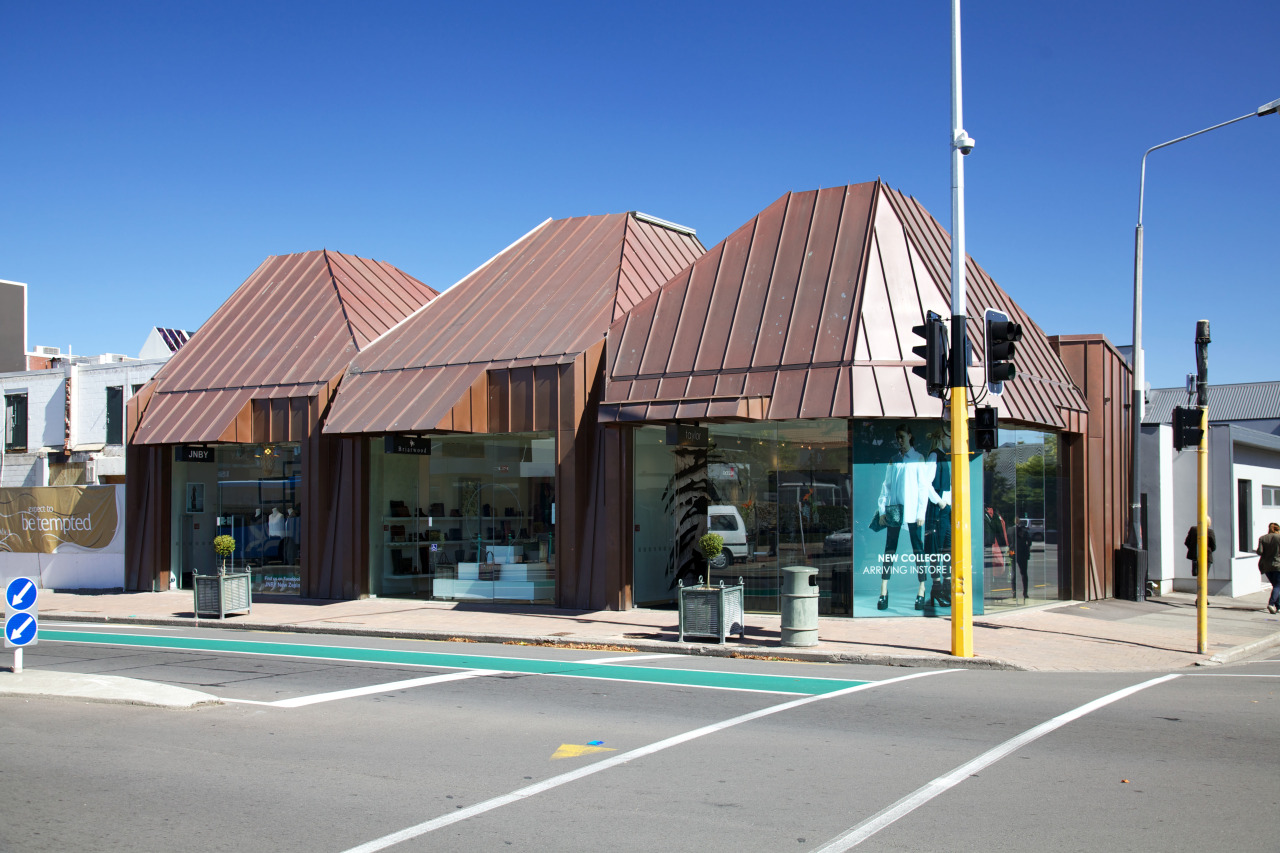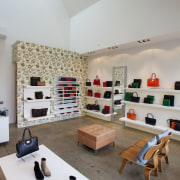Copper cladding drapes new suburban shopping centre in Merivale, Christchurch
Post-earthquake rebuild of suburban retail building in Christchurch by Thom Craig Architects, with copper cladding

The Christchurch city centre may be the focus of the post-earthquake rebuild, but the suburbs are also getting their share of attention.
This new retail building in Merivale, designed by architect Thom Craig, replaces an old-style building that was demolished following the quakes.
Craig says the owner Paddy Cotter wanted a quality building for the high-end suburb. The design needed to maximise the exposure of the prime corner site, and it needed to provide an innovative architectural response.
"The owner wanted to give something back to the precinct, and was prepared to invest time and money to create a building that was a little bit special and different from what went before.
"Traditionally a suburban shopping centre is a simple rectangular block with a glazed front the stores within don't have a strong individual identity. This design is a departure from that model, in terms of its form and materiality."
Craig says the design team chose to express the three stores within the building as stand-alone elements that would orientate towards the views and sightlines from the junction.

"The architecture is far more articulated than the original building, with three high roof volumes defining the separate stores. Each roof has a skylight at the top that allows plenty of natural light inside. The high roofs also add volume and drama to the interior, providing soaring ceilings, rather than the traditional flat tiled ceilings of older retail premises."
The architect cloaked the building in copper, effectively creating a monolithic skin that wraps the entire building. Window frames are recessed behind the copper folds and hidden from sight, so the glazing appears to merge seamlessly.
"The copper skin is like a pleated garment that has been tailor made to cloak the building," Craig says. "The crafted form and materiality provide a subtle, yet visually engaging urban response.
The rich patina of the copper is highlighted by dark vertical folds between the store fronts, and by extruded entry canopies, which look as though they have been moulded, or pushed and pulled from the same skin.
"This ensures the canopies don't interfere with the overall perception of the shapes and forms. The detailing continues around the two street fronts, so the building presents itself to pedestrians and passing traffic as a strategic node on the corner."
Craig says the copper is a low-maintenance material that will weather naturally.

"No matter what happens to the cladding, in terms of marks and scratches, it will develop its own patina."
On the interior, the spaces are spare, white and contemporary, verging on minimalist.
"This fits with the trend towards minimal, almost gallery-like store fit-outs," says the architect. "The interiors are not detailed or prescriptive, so they will suit a variety of different shops and fit-outs. The new boutique tenants Taylor, Briarwood and JNBY have capitalised on this."
Each store is equipped with a small kitchen area and a bathroom, which is another departure from the communal facilities provided by the traditional mall-style store.
Credit list
Project
Civil engineer
Cladding
Architect and interior designer
Construction company
Story by: Colleen Hawkes
Home kitchen bathroom commercial design
Commercial Design Trends Vol. 31/7
Commercial Design Trends is aimed at our professional readers, and showcases commercial buildings. The book features reg...
Read More










